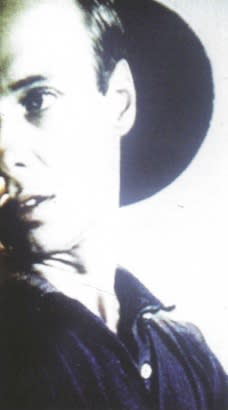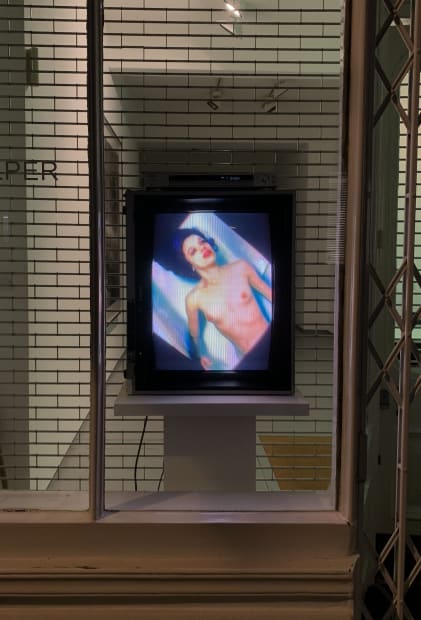-

-
“I’d resisted doing anything with video for a long time because I really didn’t like video art at all, and I’ve never been much of a television watcher. And anyway just the nature of the material was kind of ugly to me: it looked coarse. But I discovered that it looked coarse because people were always trying to make it do something that it didn’t want to do, it doesn’t want to be like film. As soon as you accept that … and accept that it has a texture, and it has a grain, that’s fine, it’s like saying that a canvas is not the same as a glossy photograph, so you then work with that texture. But generally people hadn’t.”3
“I was working with Talking Heads on the second album I did with them, and a roadie from the band Foreigner who were working next door shuffled into the studio, and said ‘Does anybody want to buy a video camera?’ I didn’t have one at the time, so I bought from him this Panasonic industrial colour video camera. It was a very peculiar object, and I still have it … And what was particularly good about it was at that time they didn’t have any automatic controls on these things, so you had to set them all, and the controls had really wide ranges. You could do absolutely mad things with this camera, in fact it was very hard to do anything realistic with it.”4
“It was quite as idiosyncratic as any of the tape recorders I’d worked with. It was a beautiful camera … and then I made the accidentally brilliant decision of pointing it at the sky for four days which completely wrecked the tube, and ever after that It produced the most magical results: it responded to light and colour in a way that no other camera I’ve ever seen can do. So I had a unique paintbrush really and I worked with that for a long time.” 3
“I could set it at a level of light sensitivity where very slight changes in the amount of light, the brightness of the light, translated into very powerful colour changes. So the picture became a way of amplifying little differences in the light of day … in music it would be called an expander, it expanded the range of the light events that were happening anyway.”4
-

-
“After that I never turned the TV back the right way round. There are two things about turning a television on it side. One is that you lose the reference to theatre and cinema that the television has: when you’re in the proscenium arch shape you expect narrative, you expect things to happen – that’s what that shape comes from, it’s a shape designed for action between a number of people. As soon as you turn it on its side, what they call portrait format, you don’t actually expect anything to happen, you expect it to stay still. And the other thing I realised many years later, when I tried to do the same thing with digital televisions, was that the distortion of the television, the scanlines, when they’re vertical they actually are very natural somehow. It’s like rain, it looks like very light rain falling all the time. And so somehow it becomes quite acceptable as part of the picture; it doesn’t look a disturbance.
In April 1984 Eno filmed Thursday Afternoon, seven videos of his friend Christine Alicino. His previous works had involved little intervention from the artist – “I used to watch and choose a continuous section that I liked, but I never edited within those sections”. 2. However, Thursday Afternoon was carefully constructed with the aim of exploring the idea of impressionistic video painting, with the video films subjected to speed alterations, distortions and other effects processing."
-
1 Brian Eno in conversation with Peter Nasmyth, 1980’s
2. Brian Eno in conversation with Sue Lawley on Desert Island Discs, BBC Radio 4, broadcast 27 January 1991
3 Brian Eno in conversation with Michael Oliver, Kaleidoscope Extra, BBC Radio 4, 1984
4 Brian Eno, interviewed at Music & Media, 7th October 2004

